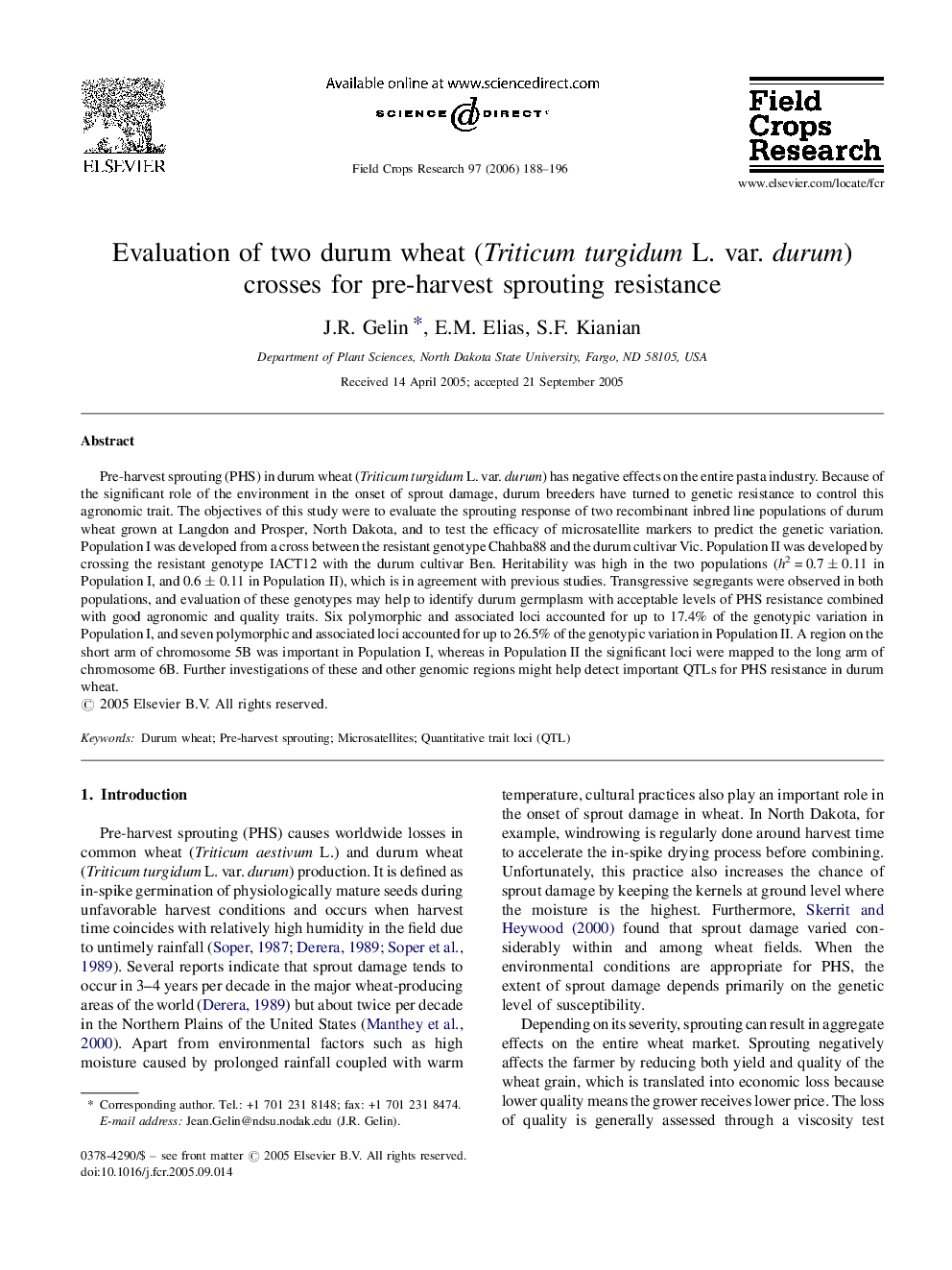| Article ID | Journal | Published Year | Pages | File Type |
|---|---|---|---|---|
| 4511712 | Field Crops Research | 2006 | 9 Pages |
Pre-harvest sprouting (PHS) in durum wheat (Triticum turgidum L. var. durum) has negative effects on the entire pasta industry. Because of the significant role of the environment in the onset of sprout damage, durum breeders have turned to genetic resistance to control this agronomic trait. The objectives of this study were to evaluate the sprouting response of two recombinant inbred line populations of durum wheat grown at Langdon and Prosper, North Dakota, and to test the efficacy of microsatellite markers to predict the genetic variation. Population I was developed from a cross between the resistant genotype Chahba88 and the durum cultivar Vic. Population II was developed by crossing the resistant genotype IACT12 with the durum cultivar Ben. Heritability was high in the two populations (h2 = 0.7 ± 0.11 in Population I, and 0.6 ± 0.11 in Population II), which is in agreement with previous studies. Transgressive segregants were observed in both populations, and evaluation of these genotypes may help to identify durum germplasm with acceptable levels of PHS resistance combined with good agronomic and quality traits. Six polymorphic and associated loci accounted for up to 17.4% of the genotypic variation in Population I, and seven polymorphic and associated loci accounted for up to 26.5% of the genotypic variation in Population II. A region on the short arm of chromosome 5B was important in Population I, whereas in Population II the significant loci were mapped to the long arm of chromosome 6B. Further investigations of these and other genomic regions might help detect important QTLs for PHS resistance in durum wheat.
